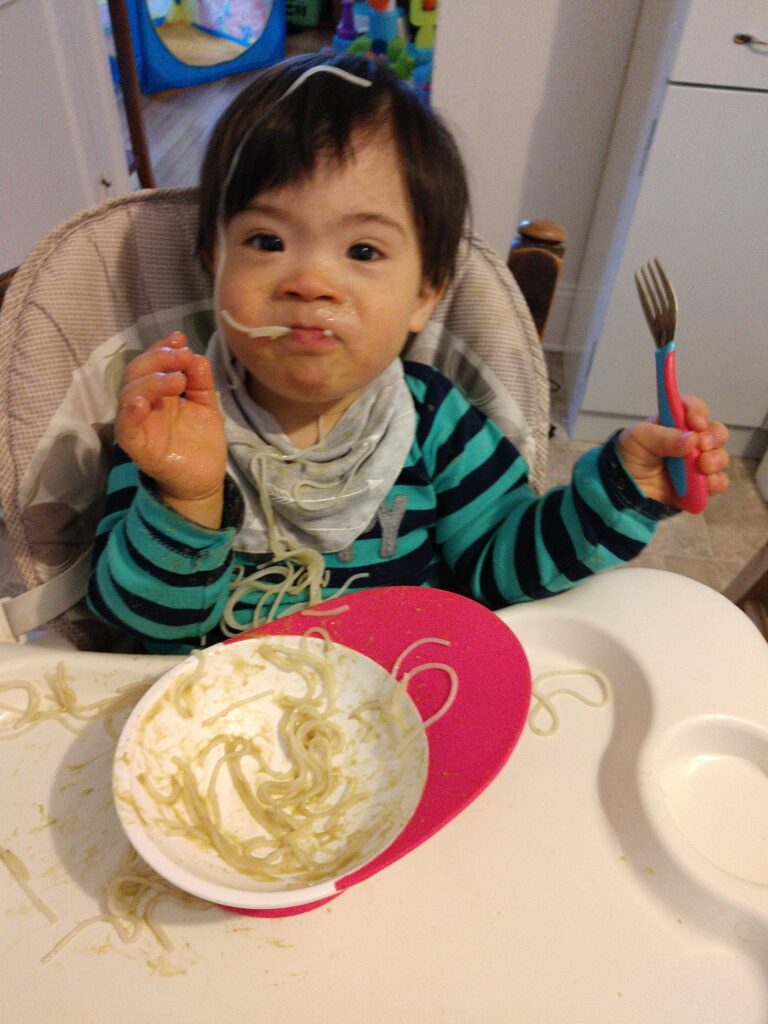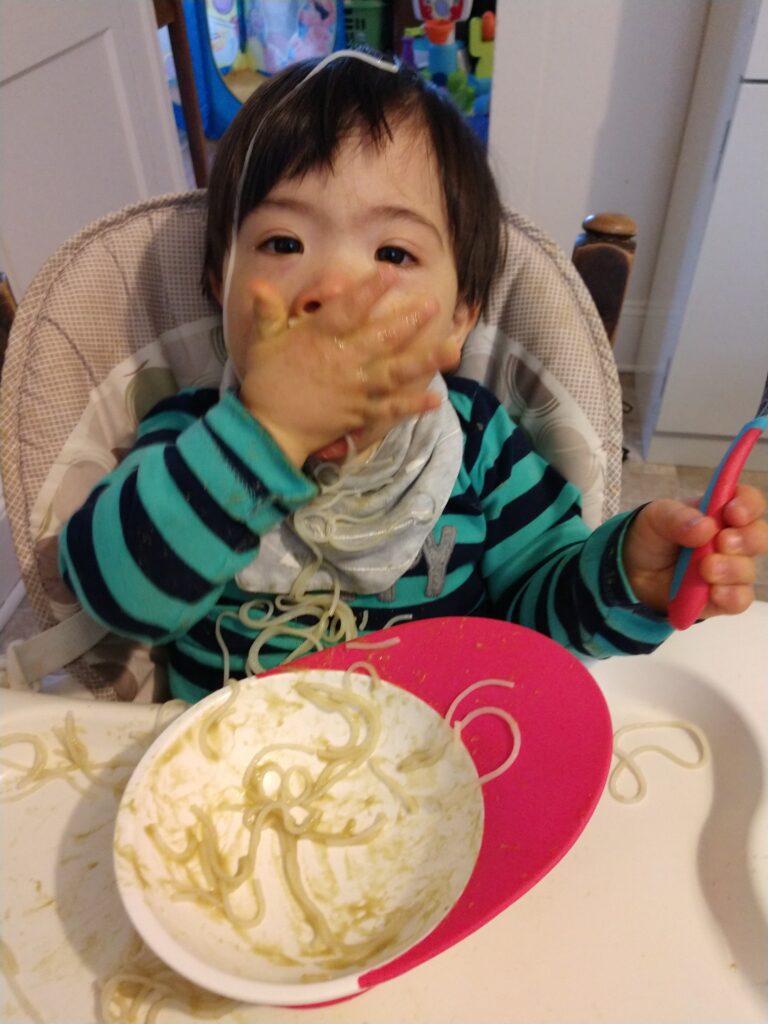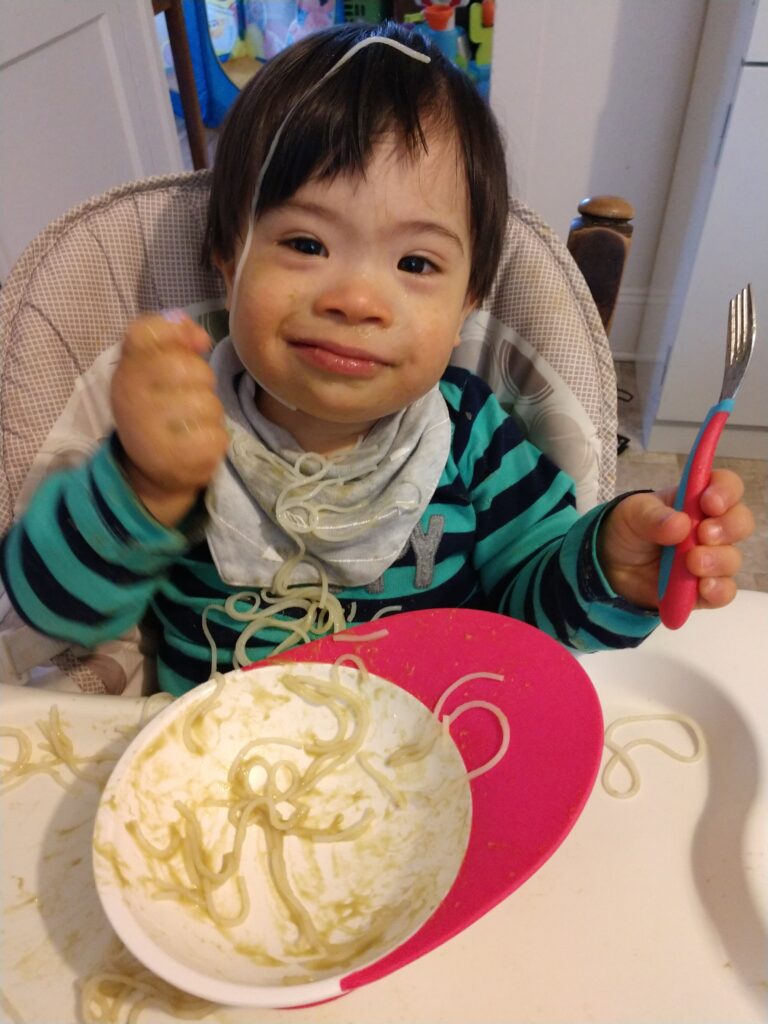One evening, we were eating our dinner. I stepped out of the dining room to get something from the kitchen. I was gone for approximately 8 seconds. Then, when I came back all the spaghetti was on the floor and was splattered on the walls and ceiling. I was astounded. How could that be possible? I looked at the crime scene and at my son Alex. He was grinning from ear to ear as if he was proud of his work. I was livid. That’s when I first used the timeout chair.
In retrospect, I should have been the one sitting on that timeout chair, not Alex. It was not really his fault but mine, but I didn’t realize that at that time. Alex has sensitivities to textures and he’s not really keen on texture exploration. But on that day, he was ready to explore on his own without fear. He was touching, smelling, and tasting the spaghetti. I should be ecstatic, not angry. My exhausted-mom-side of myself kicked in and did not appreciate the mess.



I have to confess. As a busy parent, I didn’t really encourage food play in our house. Yes, I am guilty! And I am terribly sorry for not addressing Alex’s texture sensitivities problem. I am embarrassed to admit and it deeply saddens me whenever I think about it. I regret that I failed my son. I am sure in some ways I’ve hampered Alex’s growth. So I had to change. I guess a messy house is not too bad at all. I need to remember that a messy house only means that I have a creative toddler whose mind is busy at work!
So our food and texture adventures begin. First, I started digging through our food pantry. Those forgotten boxes of dry food and canned goods in our food pantry were repurposed for Alex’s food play. Alex and I were cooking a variety of pasta and putting them in the bowls. We were making different Jell-O and pudding desserts. We were chopping and mashing food on the table, on the floor, and even in the living room! Alex is starting to like this game. He is not quite there yet but I’ve seen him start ‘kissing’ and tasting the food.
According to his speech therapist from University of Virginia (UVA) speech therapy clinic, Alex is ready to move on to the next level of feeding. Alex has been chewing his chewy tube really well. He is putting food in his mouth to taste (but not yet chewing the food). He is able to bite the food and can spit it out. He can swallow his own food with no problem. Alex can do all of that – except for chewing his food.
Alex tends to mash his food with his tongue and then swallows it. Whenever we give him food with some chunks, he gags. Then, he refused to eat the food. I didn’t want him to develop any food aversions so I don’t push when he says, no. Sometimes, I feel I don’t know what to do to help him. From our last visit, the speech therapist gave us some ideas on how to introduce the skill.
SInce Alex is familiar with the first-then approach, we use it whenever we have feeding or chewing exercises. First, we show him the schedule. Then, we encourage him to follow the schedule. Sometimes, he will refuse but my husband and I are firm with following the schedule. Alex has learned that we can’t skip to the next activity until we have completed the preceding activity.
Obviously, any introduction of a new skill must be broken down to smaller and manageable tasks; this is what they call task analysis. I don’t expect Alex chewing chunks of food on his own. As the speech therapist’s advice, we should start by putting food into a straw and have Alex chew it. We should do this exercise regularly and consistently before or after meals. Eventually, Alex will understand that chewing is part of eating. He must learn to chew his food before swallowing it.
Alex doesn’t respond well when a task is given in a serious and authoritative way. We had more success when he was having fun and when we were doing the same activity with him. Play is work for children his age. Play is fun and enjoyable. I think the greatest challenge for me now is how I can make this chewing exercise more fun and engaging for him.
So far, these are the following activities we’ve been doing: we include it in his visual schedule pairing it with a desirable activity. We do some competitive games like ‘Who can chew more, mommy or Alex?” Since Alex likes Sesame Street characters, I use them in the chewing session. I model feeding the Cookie monster and say, “Cookie monster, chew your food!” Then I do the chewing; showing Alex how I chew my food. Next, I encourage him to chew the food as well. Alex has started chewing some of his food but not consistently. I am still exploring other activities and I will share it with you when I discover something new and effective.
